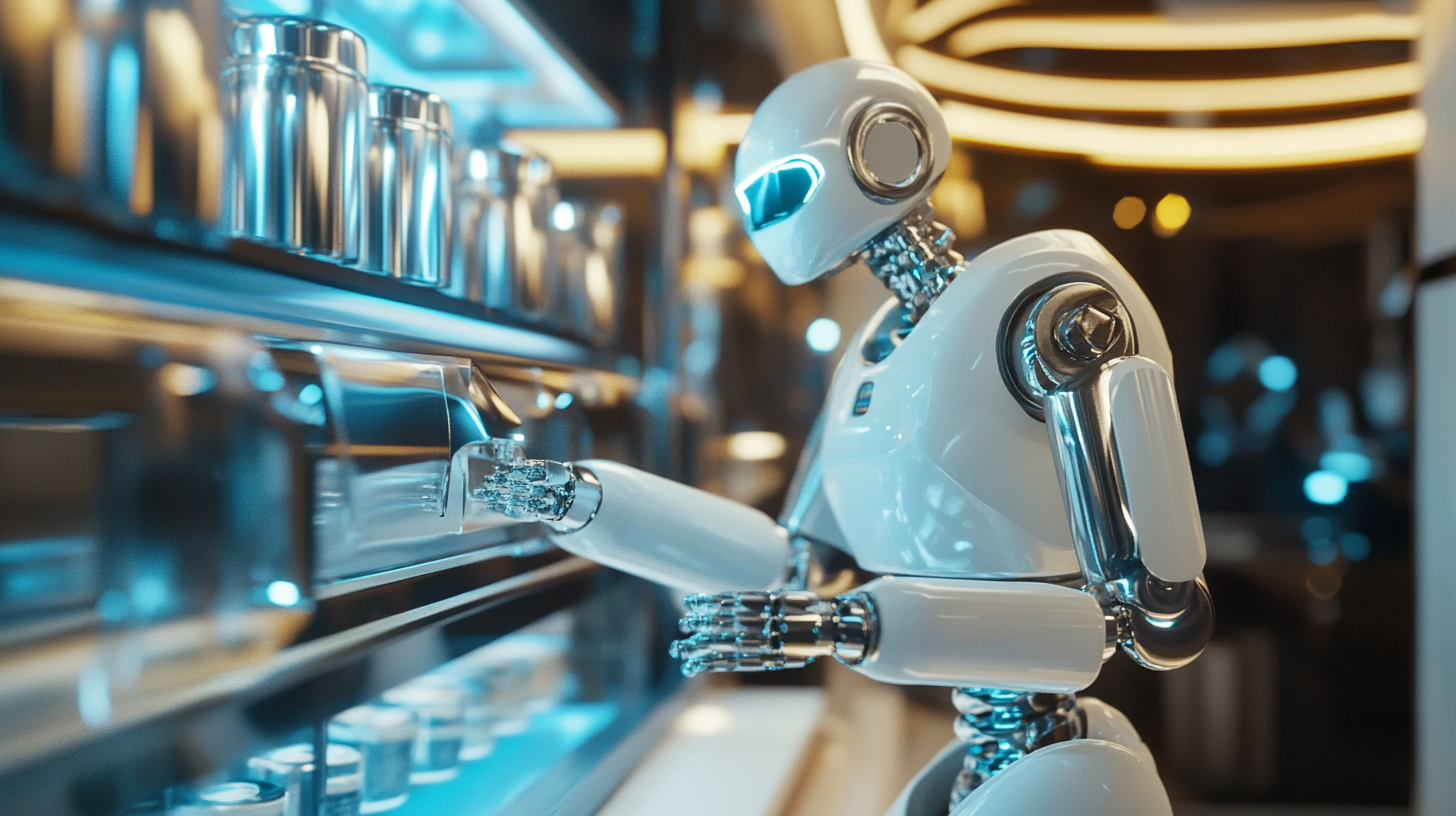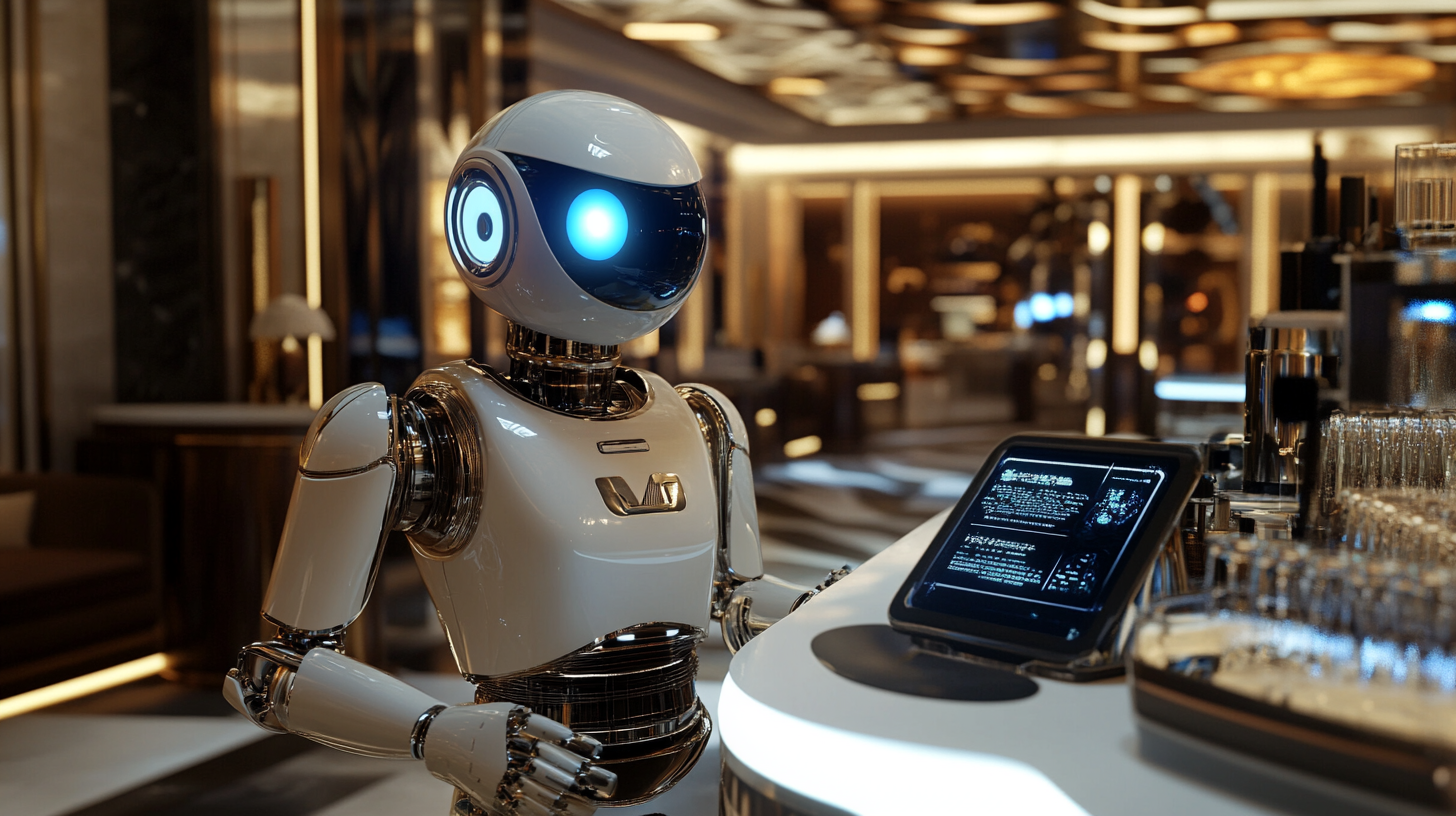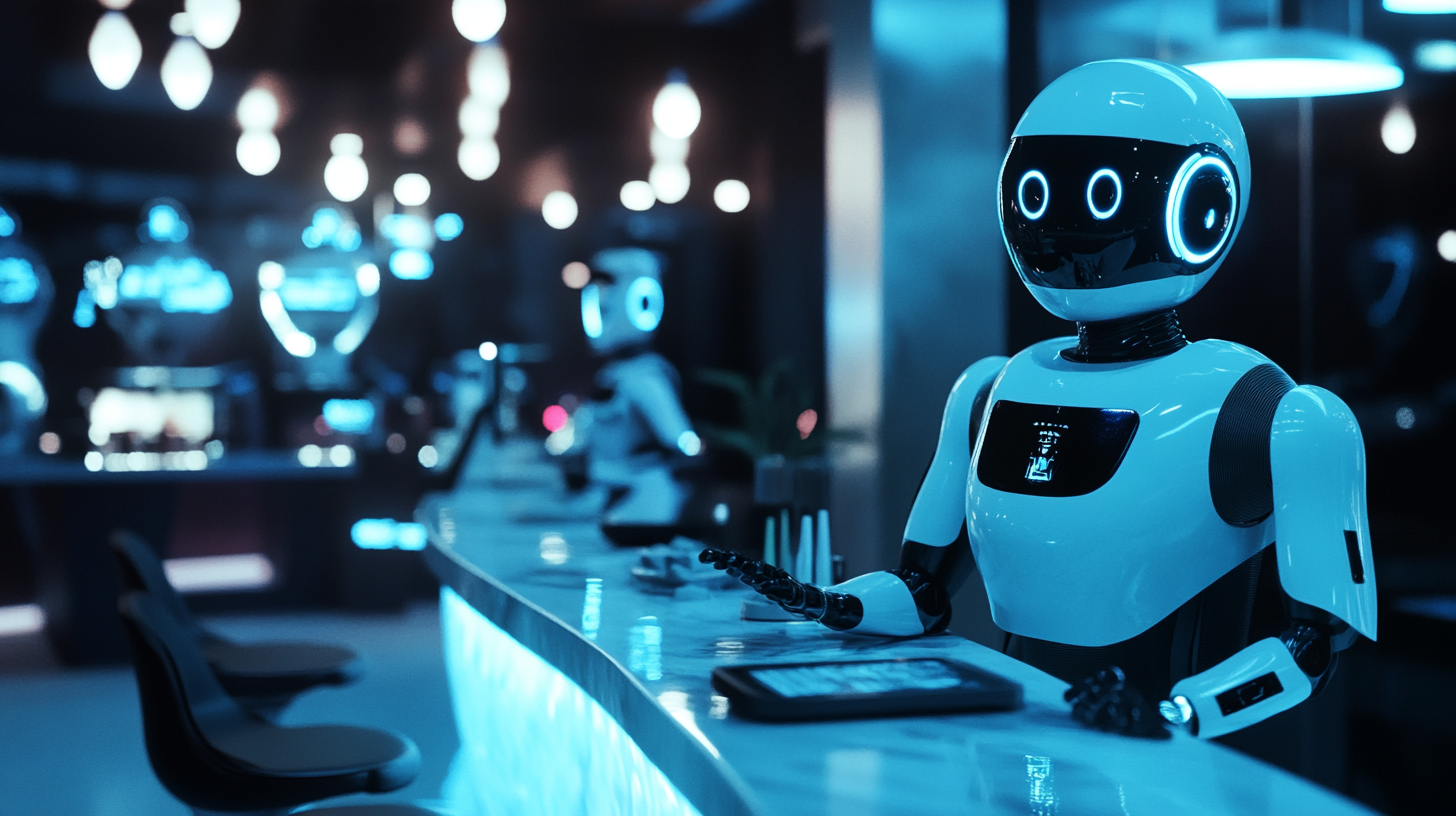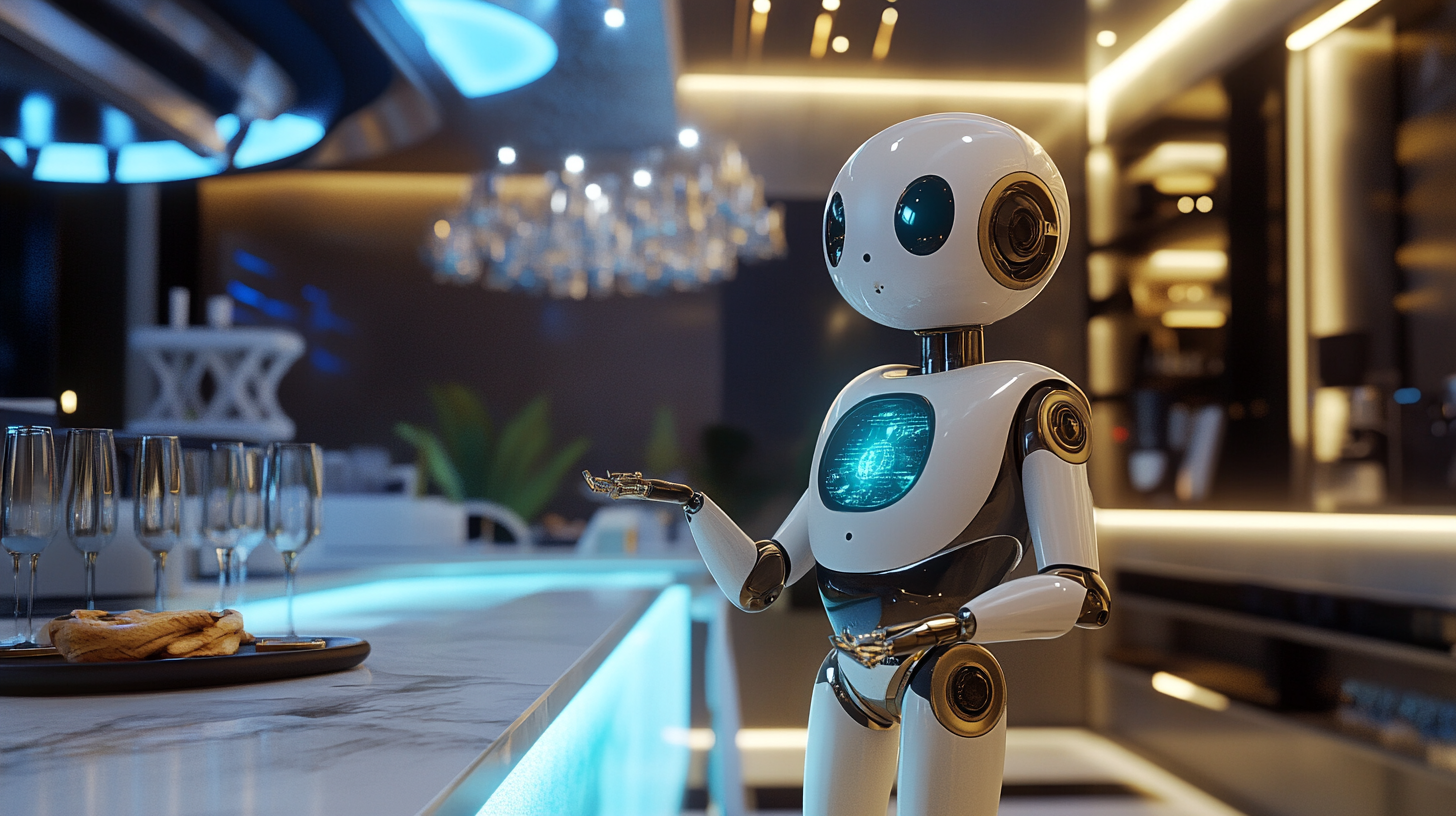In recent years, the concept of dining out has undergone a revolutionary transformation with the emergence of the Robot Cafe. These futuristic establishments are redefining the way we experience food and beverage service, merging advanced technology with culinary delights. As cities around the world embrace innovation, robotic cafes are gaining popularity, captivating not only tech enthusiasts but also a broader audience eager to explore this unique dining experience.
Robot Cafes offer an intriguing blend of automation and hospitality, pushing the boundaries of traditional dining. Customers are greeted by cheerful robotic servers, who not only take orders but also deliver food and drinks with precision. This novel approach enhances convenience, mitigates labor shortages, and promises a fun and engaging atmosphere. As more people seek out unique dining experiences, the rise of Robot Cafes is paving the way for a new chapter in the culinary landscape, where technology and gastronomy come together in exciting and unexpected ways.

In recent years, robotic cafes have emerged as a transformative force in the dining experience, ushering in a new era that shifts from traditional barista-led operations to automated coffee serving. Innovative developments in robotics have made it possible for machines to prepare a diverse range of beverages, including coffees, teas, and iced drinks, at remarkable speeds—some systems report outputs of up to 200 coffees per hour. The rapid adoption of robotic baristas reflects the growing consumer demand for customization, efficiency, and contactless service, especially in a post-pandemic world. As coffee shops increasingly incorporate automation, we see major brands adopting these technologies across numerous locations, including high-traffic areas such as airports and tourist destinations. The installation of robotic baristas has surged, with reports indicating that over 500 units can be found in various establishments, from hospitals to museums. This trend illustrates not only a technological evolution but also a strategic response to the changing expectations of consumers, who are looking for quick, consistent, and sanitized service. Moreover, industry analysts predict that the rise of artificial intelligence in the hospitality sector will further redefine the role of the barista. While machines are proving capable of delivering high-quality beverages, the experience and personal touch offered by human baristas prompt essential questions about the balance between efficiency and customer engagement. The integration of AI could enhance the capabilities of robotic systems, allowing for more personalized interactions and recommendations, thereby reshaping the entire coffee shop experience. As we move forward, the blend of technology and human creativity will likely determine the trajectory of cafes in this new era.

The introduction of robotic cafes has transformed the culinary landscape, offering a glimpse into the future of dining. Automation in these establishments brings a myriad of benefits, including enhanced efficiency and consistency. With robots handling repetitive tasks such as grinding coffee or brewing beverages, human staff can focus on more complex elements of customer service and culinary creativity. This shift not only streamlines operations but also reduces the likelihood of human error, ensuring that every cup of coffee is brewed to perfection each time.
However, the rise of automation in dining also presents significant challenges that need to be addressed. One major concern is the potential loss of jobs in the hospitality sector. As robotic systems can replace human workers in roles such as baristas and servers, this technology may lead to increased unemployment rates, sparking debate about the balance between innovation and workforce sustainability. Moreover, the social aspect of dining, which often revolves around human interaction, could diminish as robots take over tasks traditionally performed by people, potentially leading to a less personalized dining experience.
Despite these concerns, the integration of robotics into cafes has the potential to enhance customer engagement in unexpected ways. For instance, tech-savvy customers may be drawn to the novelty of interacting with robots, adding an element of entertainment to their dining experience. As robotic cafes continue to develop, striking the right balance between automation and human touch will be crucial for ensuring that the dining experience remains enjoyable and meaningful.

The evolution of the dining experience has reached a remarkable new frontier with the advent of robotic cafes. These innovative establishments blend technology with hospitality, offering guests not only a unique culinary experience but also a glimpse into the future of customer service. By integrating robotic systems into their operations, these cafes are redefining how patrons interact with their environment and, ultimately, with each other.
At the core of this transformation is the way robotic cafes enhance customer interaction. Instead of traditional waitstaff, robots equipped with artificial intelligence take orders, serve food, and engage customers in conversation. This shift allows for a streamlined service model, minimizing wait times and creating a more efficient dining experience. Customers are captivated by the novelty of being served by robots, sparking conversations about technology, automation, and the implications for the future of work in the hospitality industry.
Moreover, robotic cafes facilitate a unique opportunity for social engagement. The quirky personality traits programmed into these service bots often lead to memorable interactions. Whether it’s a playful banter or personalized recommendations based on customer preferences, the robots serve as an unexpected yet delightful icebreaker. This not only enhances the dining experience but also fosters a sense of community among patrons, who bond over their shared fascination with the robots. As a result, robotic cafes are not just a culinary trend; they are cultivating a new culture of dining where technology and human connection coexist harmoniously.

As we delve into the transformative landscape of global dining experiences, the rise of robotic cafes exemplifies how technological innovations are radically reshaping the sector. With a significant shift focusing on automation, establishments are embracing robots to enhance efficiency and improve customer interaction. These advancements cater to the evolving preferences of tech-savvy consumers who seek not only convenience but also an intriguing dining experience.
The driving force behind the robotic cafe trend is the integration of artificial intelligence (AI) and advanced robotics into food service. Notable innovations showcased at recent technology expos reveal a blend of robots designed for food preparation, delivery, and even customer service. These systems streamline operations, ensuring faster service and reduced wait times while maintaining consistent quality. As the fast-casual sector gears up for 2024, many executives are actively exploring ways to test and implement robotic solutions to bolster their operations, demonstrating a clear shift toward embracing automation.
Moreover, the emerging trends extend beyond mere automation; they highlight a profound impact on customer experience. By utilizing robots, cafes can create engaging environments where technology meets culinary creativity. The infusion of robotic systems into dining not only captures consumer interest but also offers unique interactive opportunities, leading to a dynamic dining ambiance. This trend is indicative of a broader movement within the restaurant industry, where innovation aligns closely with customer engagement, setting a precedent for the future of dining.
The rise of robotic cafes is rapidly transforming the global dining experience, reflecting a growing trend that intertwines technology and hospitality. With projections indicating that the global food service market will expand significantly—from approximately $3.49 trillion in 2024 to nearly $6.81 trillion by 2032—it's evident that dining preferences are evolving. This market growth is mirrored by innovations in automation and artificial intelligence, which are reshaping how services are delivered across diverse regions.
In particular, robotic cafes have become a focal point in many countries, presenting a unique blend of efficiency and novelty. The increasing acceptance of technology among consumers has led to a burgeoning interest in robotic waiters and baristas. Reports suggest that the global robot waiter market could grow at an impressive compound annual growth rate (CAGR) of over 35% from 2022 to 2028. This growth is driven by the demand for enhanced customer experiences and the rising trend of restaurant automation, ultimately allowing food and beverage establishments to operate more smoothly and cater to customers in innovative ways.
Moreover, as regions around the world adopt these advancements, we see localized adaptations of the robotic cafe concept. In some areas, cafes are incorporating local flavors and cultural nuances into their automated offerings, creating a unique dining experience that resonates with patrons. This intersection of global technology and local tradition places robotic cafes at the forefront of modern dining, offering a glimpse into the future of food service where innovation and tradition coexist harmoniously.